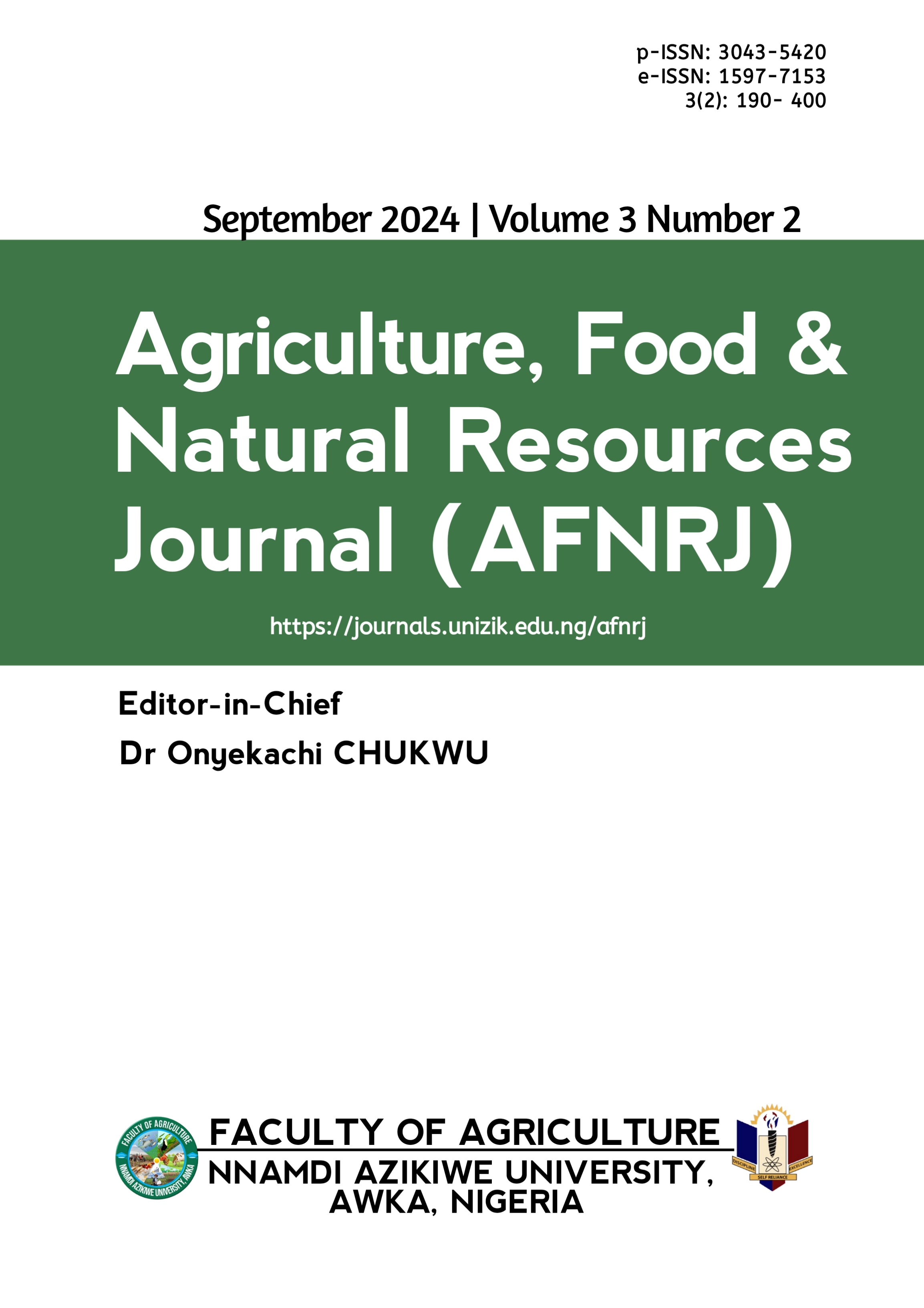Effect of processing techniques on the quality and cyanogenic glycoside content of fermented cassava flours
DOI:
https://doi.org/10.5281/zenodo.14252964Keywords:
Cassava root, Cyanide, Fermentation, Functional properties, Proximate compositionAbstract
Cassava root (Manihot esculenta Crantz) is highly perishable and contains toxic compounds, necessitating processing and preservation to ensure safe consumption and the production of shelf-stable, value-added products. This study evaluated the effect of various processing techniques on the quality of fermented cassava flour (known as lafun in South-Western Nigeria). Cassava roots (TME 419) were processed using grated solid-state fermentation (GSSF), sliced-soaked fermentation (SSMF), and parboiled-soaked fermentation (PSMF), with products dried in a parabolic solar dryer. Flour quality was assessed based on proximate composition, cyanide content, functional properties, and pasting properties. Moisture content ranged from 11.17% - 12.86%, with the lowest in PSMF. Crude fat, protein, crude fibre, and carbohydrate contents varied from 1.17% - 2.65%, 6.16% - 7.42%, 0.41% - 0.55%, and 69.92% - 74.85%, respectively. Cyanide concentrations ranged from 1.720 - 1.780 mg/kg, indicating a 92.11% - 92.37% reduction from fresh cassava roots (22.55 mg HCN/kg). Water and oil absorption capacities ranged from 212.57% - 246.93% and 59.96% - 65.17%, respectively, with PSMF significantly higher. PSMF exhibited the highest swelling power (225.07%) and lowest water solubility (39.46%), along with the highest filling weight (0.785 g/cm³). Pasting temperature and peak time ranged from 75.48°C - 93.58°C and 4.53 - 6.97 min, with PSMF having the highest values. These results suggest that PSMF is the most effective method for producing high-quality fermented cassava flour.
Downloads
Published
Issue
Section
License
Copyright (c) 2024 Omoniyi Samuel OYEWOLE; Oluwatosin Abigael OJO, Kunle OGUNGBEMI, Shuaeeb Niyi OYEWOLE, Olufisayo IBITOYE, Taiwo Oluwatoyin AJAO, John Olutobi FAMAKINWA, Abdul-Zahir Olamide ALAO, Folashade Salewa ADENIJI

This work is licensed under a Creative Commons Attribution 4.0 International License.
which permits unrestricted use, distribution, and reproduction in any medium, provided the original author and source are credited.
Authors retain the copyright of their published work in the AFNRJ.





